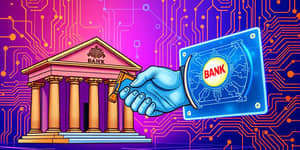In recent years, the payment landscape has undergone a profound transformation, driven by cutting-edge technologies and evolving consumer expectations. What once started as a novelty has become an integral part of daily life, influencing how we shop, bank, and interact online. As emerging trends disrupt traditional models, individuals and businesses alike must adapt to stay ahead in this dynamic environment.
From contactless taps to AI-driven fraud prevention, the tools and services at our fingertips signal a new era of financial empowerment. This article explores the key innovations shaping the future of payments and how they are redefining consumer behavior on a global scale.
Digital Wallets and Contactless Payments: The New Normal
The widespread adoption of smartphones and near-field communication (NFC) technology has positioned digital wallets as the cornerstone of modern payments. Leading platforms like Apple Pay, Google Pay, and region-specific e-wallets enable rapid adoption of digital wallets, offering consumers a streamlined alternative to cash and plastic cards.
In markets such as Sub-Saharan Africa, mobile-first e-wallets are leapfrogging traditional banking infrastructure, providing financial access to millions. With robust encryption and tokenization, users can make secure transactions at vending machines, public transit, and retail outlets with a simple tap.
Real-Time and Embedded Payments: The Drive for Instantaneity
Gone are the days of waiting days for funds to clear. Real-time payment networks like ISO 20022, The Clearing House’s RTP, and FedNow enable instant settlement capabilities around the clock. This constant availability reduces friction and elevates expectations for instant gratification.
Embedded finance takes this further by integrating payment capabilities directly into apps and websites. Shoppers can complete purchases without leaving their favorite platforms, significantly lowering cart abandonment and driving conversion rates through seamless payment experiences without friction.
Open Banking and the API Economy: Seamless Integration
Open banking initiatives and standardized APIs have democratized access to financial data, enabling fintechs and traditional banks to collaborate like never before. Developers can now embed payment options, credit lines, or savings tools directly within third-party applications.
This ecosystem approach fosters seamless user journeys across multiple platforms, where consumers can manage multiple financial tasks—checking balances, transferring funds, and paying invoices—without toggling between services. The result is an interconnected experience that aligns with modern digital lifestyles.
The Rise of BNPL and Alternative Credit Options
Buy Now, Pay Later services, led by players like Klarna and Afterpay, have exploded beyond e-commerce into everyday spending categories. By breaking payments into interest-free installments, BNPL offers flexible credit alternatives like BNPL options that resonate with younger consumers seeking budget-friendly solutions.
- Utilities
- Grocery shopping
- Car payments
- Travel bookings
These services empower customers to spread the cost of essential purchases, fostering loyalty and encouraging repeat engagement. Merchants benefit from increased average order values and reduced cart abandonment rates.
AI, Automation, and the Era of Intelligent Transactions
Artificial intelligence is at the forefront of enhancing security and personalization in the payment space. Machine learning algorithms power AI-driven fraud detection and prevention, analyzing transaction patterns in real time to identify anomalies before losses occur.
Meanwhile, chatbots and voice assistants are creating new interfaces for payments, allowing users to transfer funds, pay bills, or request credit lines through natural language commands. This level of automation streamlines workflows for both businesses and consumers, maximizing efficiency and satisfaction.
Blockchain, Digital Currencies, and Cross-Border Innovation
Blockchain technology and digital currencies are redefining the rules of cross-border commerce. By automating settlement processes and providing transparent ledgers, blockchain networks reduce or eliminate costly intermediaries.
Central Bank Digital Currencies (CBDCs) and stablecoins are on the horizon, promising to deliver programmable money with regulatory backing. These innovations could one day enable microtransactions, peer-to-peer lending, and global remittances with unprecedented speed and traceability.
Regulatory Evolution and Industry Collaboration
As payment solutions proliferate, regulators are adapting frameworks to ensure security, privacy, and fair competition. Expanded licensing requirements now encompass nonbanks and fintech providers, promoting responsible innovation.
Initiatives around data privacy, biometric authentication, and tokenization are strengthening consumer trust, while industry partnerships between incumbents, startups, and governments accelerate the rollout of compliant, customer-centric services.
Regional Perspectives: Leapfrogging Markets
Different regions are charting unique courses in the payment revolution. In high-income markets, contactless payments and real-time transfers dominate. In emerging economies, mobile-first approaches drive adoption and inclusion.
Despite disparities in infrastructure, the global trajectory is clear: digital payments are replacing cash, and consumers everywhere are embracing the convenience and security of modern solutions.
The Future Vision: What Businesses and Consumers Should Expect
The journey ahead promises even greater personalization, speed, and transparency. AI will continue evolving, offering predictive financial insights and proactive fraud alerts. Voice and wearable devices may become primary payment channels, while blockchain protocols underpin trustworthy, cross-border ecosystems.
To thrive in this environment, businesses must adopt flexible platforms, collaborate across ecosystems, and prioritize consumer experience. By anticipating trends and investing in secure, user-friendly solutions, organizations can position themselves at the forefront of a payments landscape defined by innovation, choice, and empowerment.
References
- https://www.echohealthinc.com/blog/the-future-of-payments-in-2025-modernization-in-the-us
- https://www.mastercard.com/news/perspectives/2024/10-top-payments-trends-for-2025-and-beyond/
- https://bankingjournal.aba.com/2025/03/six-payments-trends-driving-the-future-of-transactions/
- https://www.jpmorgan.com/insights/payments/payment-trends/five-payment-trends-in-2025
- https://thepaymentsassociation.org/article/the-future-of-payments-key-trends-that-will-shape-2025/
- https://www.preczn.com/blog/the-future-of-consumer-payments-trends-redefining-2024-and-beyond
- https://www.mckinsey.com/industries/financial-services/our-insights/the-future-of-payments-in-africa










